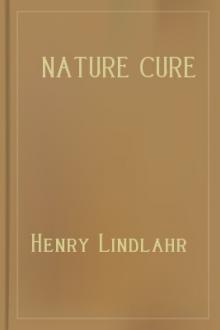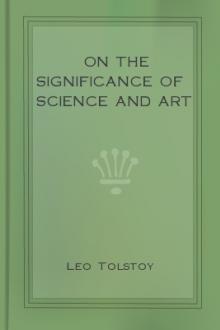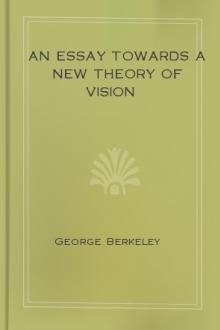Genre Science. Page - 5

ishment, clothing and protection under the parental roof for a period varying from eighteen to twenty years, or even longer.
c. =Support and Protection of Weaker Members of Society.=--Young animals are supported and protected because they are unable to support and protect themselves. If they were not thus cared for the race would become extinct. Now, there are certain individuals, orphans for example, who have, through some accident, been deprived of their natural support and protection. If these weaker members of society, not yet able to support and protect themselves, were not provided for, they would perish and become thus lost to the race. From the time of primeval man to the present, these weaker individuals of society who have been deprived of their natural protectors, have been cared for by the stronger members of society and afforded such support and protection as they may need to make them independent. In a similar way the sick and defective members of society are cared for by the strong. Thus

-Chancroids.
XXVI. THE CURABILITY OF VENEREAL DISEASE 174
Gonorrhea May Be Practically Cured in Every Case in Man--Extensive Gonorrheal Infection in Woman Difficult to Cure--Positive Cure in Syphilis Impossible to Guarantee.
XXVII. VENEREAL PROPHYLAXIS 177
Necessity for Douching Before and After Suspicious Intercourse--Formulæ for Douches--Precautions Against Non-venereal Sources of Infection--Syphilis Transmitted by Dentist's Instruments--Manicurists and Syphilis--Promiscuous Kissing a Source of Syphilitic Infection.
XXIII. ALCOHOL, SEX AND VENEREAL DISEASE 181
Alcoholic Indulgence and Venereal Disease--A Champagne Dinner and Syphilis--Percentage of Cases of Venereal Infection Due to Alcohol--Artificial Stimulation of Sex Instinct in Man and in Woman--Reckless Sexual Indulgence Due to Alcohol--Alcohol as an Aid to Seduction.
XXIX. MARRIAGE AND GONORRHEA 187
Decision of Physician Regarding Marriage of Patients Infected with Gonorrhea or Syphilis--A

esthesia.
Two years ago, an historic appreciation of the discovery of etherwas presented here by Professor Welch, and last year an addresson medical research was given by President Eliot. I, therefore,will not attempt a general address, but will invite yourattention to an experimental and clinical study. In presentingthe summaries of the large amount of data in these researches,I acknowledge with gratitude the great assistance rendered bymy associates, Dr. D. H. Dolley, Dr. H. G. Sloan, Dr. J. B. Austin,and Dr. M. L. Menten.
The scope of this paper may be explained by a concrete example.When a barefoot boy steps on a sharp stone there is an immediate dischargeof nervous energy in his effort to escape from the wounding stone.This is not a voluntary act. It is not due to his own personal experience--his ontogeny--but is due to the experience of his progenitorsduring the vast perio

ime, it can be said that theindividual has started on the road of ill health. How fast he willtravel and just what will be the character of the disease he meetswith will depend upon his constitution, inheritance, environment andeducation.
APPENDICITIS
CHAPTER I.
This cut represents the back view of the cecum, the appendix, a partof the ascending colon, and the lower part of the ileum, with thearterial supply to these parts.
"A, ileo-colic artery; B and F, posterior cecal artery; C,appendicular artery; E, appendicular artery for free end; H, arteryfor basal end of appendix; 1, ascending or right colon; 2, externalsacculus of the cecum; 3, appendix; 6, ileum; D, arteries on thedorsal surface of the ileum."--Byron Robinson.
The reader will see how very much like a blind pouch the cecum is,2. The ileum, 6, opens into the cecum, all of the bowel below theopening being cecum, the opening of the appendix, 3, is in the lowerpart of the ce

way of defining Beauty which grounds it in general principles,while allowing it to reach the concrete case, is set forth inthe essay on the Nature of Beauty. The following chapters aimto expand, to test, and to confirm this central theory, byshowing, partly by the aid of the aforesaid special studies,how it accounts for our pleasure in pictures, music, andliterature.
The whole field of beauty is thus brought under discussion;and therefore, though it nowhere seeks to be exhaustive intreatment, the book may fairly claim to be a more or lessconsistent and complete aesthetic theory, and hence toaddress itself to the student of aesthetics as well as to thegeneral reader. The chapter on the Nature of Beauty, indeed,will doubtless be found by the latter somewhat technical, andshould be omitted by all who definitely object to professionalphraseology. The general conclusions of the book aresufficiently stated in the less abstract papers.
Of the essays which compose the following volume, the f

y express request. He took his time to examine and think; and he saw the chance of saving the patient by venturing on the use of the lancet as plainly as I did--with my forty years' experience to teach me! A young man with that capacity for discovering the remote cause of disease, and with that superiority to the trammels of routine in applying the treatment, has no common medical career before him. His holiday will set his health right in next to no time. I see nothing in his way, at present--not even a woman! But," said Sir Richard, with the explanatory wink of one eye peculiar (like quotation from Shakespeare) to persons of the obsolete old time, "we know better than to forecast the weather if a petticoat influence appears on the horizon. One prediction, however, I do risk. If his mother buys any of that lace--I know who will get the best of the bargain!"
The conditions under which the old doctor was willing to assume the character of a prophet never occurred. Ovid remembered that he was go

onishing spread andpopularity of these therapeutic innovations?
Their success undoubtedly is based on the fact that they concentratetheir best efforts on preventive instead of combative methods oftreating disease. People are beginning to realize that it is cheaperand more advantageous to prevent disease than to cure it. To createand maintain continuous, buoyant good health means greaterefficiency for mental and physical work; greater capacity for thetrue enjoyment of life, and the best insurance against failure andpoverty. Therefore, he who builds health is of greater value tohumanity than he who allows people to drift into disease throughignorance of Nature's laws, and then attempts to cure them bydoubtful and uncertain combative methods.
It is said that in China the physician is hired and paid by theyear; that he receives a certain stipend as long as the members ofthe family are in good health, but that the salary is suspended aslong as one of his charges is ill. If some similar method o

it is only necessary for him to display intelligence,--one man in the military service, another in the judicial, another on the violin. There have been many and varied expressions of human wisdom, and these phenomena were known to the men of the nineteenth century. The wisdom of Rousseau and of Lessing, and Spinoza and Bruno, and all the wisdom of antiquity; but no one man's wisdom overrode the crowd. It was impossible to say even this,--that Hegel's success was the result of the symmetry of this theory. There were other equally symmetrical theories,--those of Descartes, Leibnitz, Fichte, Schopenhauer. There was but one reason why this doctrine won for itself, for a season, the belief of the whole world; and this reason was, that the deductions of that philosophy winked at people's weaknesses. These deductions were summed up in this,--that every thing was reasonable, every thing good; and that no one was to blame.
When I began my career, Hegelianism was the foundation of every thing. It was floating i

he Beth-horon Route--The Amorites defeated but not surrounded--King David as a Strategist. THE MIRACLE--The Noon-day Heat, the great Hindrance to the Israelites--Joshua desired the Heat to be tempered--The Sun made to "be silent"--The Hailstorm--The March to Makkedah--A Full Day's March in the Afternoon--"The Miracle" not a Poetic Hyperbole--Exact Accord of the Poem and the Prose Chronicle--The Record made at the Time--Their March, the Israelites' Measure of Time 351
CHAPTER II.
THE DIAL OF AHAZ
The Narrative--Suggested Explanations--The "Dial of Ahaz," probably a Staircase--Probable History and Position of the Staircase--Significance of the Sign 385
CHAPTER III.
THE STAR OF BETHLEHEM
The Narrative--No Astronomical Details given--Purpose of the Scripture Narrative--Kepler's suggested Identification of the Star--The New Star of 1572--Legend of

g any other IDEA. If I do not perceive theredness or paleness of a man's face themselves, it is impossible I shouldperceive by them the passions which are in his mind.
11. Now from sect. 2 it is plain that distance is in its own natureimperceptible, and yet it is perceived by sight. It remains, therefore,that it be brought into view by means of some other IDEA that is itselfimmediately perceived in the act of VISION.
12. But those LINES and ANGLES, by means whereof some MATHEMATICIANSpretend to explain the perception of distance, are themselves not at allperceived, nor are they in truth ever thought of by those unskilful inoptics. I appeal to anyone's experience whether upon sight of an OBJECT hecomputes its distance by the bigness of the ANGLE made by the meeting ofthe two OPTIC AXES? Or whether he ever thinks of the greater or lesserdivergency of the rays, which arrive from any point to his PUPIL? Everyoneis himself the best judge of what he perceives, and what not. in vainshall all the M